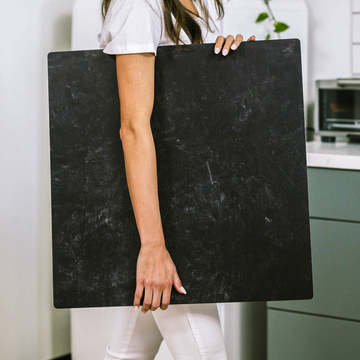If you think choosing a flat lay backdrop is all about picking the prettiest color or texture, you're missing out on a huge opportunity. Sure, style matters-but if you've ever been tripped up by weird glare, off-color tones, or pesky shadows, there's a deeper story at play. Flat lay pros aren't just thinking about looks-they're thinking like engineers. The real difference between “it looks okay” and “wow, that's stunning” often comes down to how your backdrop interacts with light.
Most guides gloss over this topic, but today, we're going behind the scenes. Let's uncover how the science of surface engineering and photometric response can transform your flat lay game. This isn’t about spending big; it’s about understanding the rules-and then breaking them with purpose.
Why Backdrop Engineering Matters for Flat Lays
Most DIY or store-bought backdrops-tiles, poster board, contact paper-are designed for craft, not cameras. They reflect and absorb light in unpredictable ways, which can leave you battling frustrating results:
- Harsh glare that hides your beautiful products
- Color casts that make whites look blue, gray, or yellow
- Flat, lifeless shadows that sap your images of depth
The science behind this? Every surface has its own fingerprint for how it deals with incoming light. In technical photography, this is called the photometric response.
What Is Photometric Response?
That’s a fancy term for how a material handles light: does it reflect it in a mirror-like way (hello, ugly shine)? Does it scatter the light softly for natural shadows and crisp textures? Does it stubbornly skew the color? All these play a huge part in whether your finished photo looks pro-or just so-so.
- Specular reflection: Creates mirror-like highlights and glare (think glossy countertops).
- Diffuse reflection: Scatters light smoothly for forgiving, matte finishes (think real stone or professional backdrops).
- Color shift: The hidden cause of why your “white” soap comes out yellow in photos.
High-end photography backdrops-like those from Replica Surfaces-aren’t lucky accidents. They’re designed to reflect and diffuse light beautifully, no matter the angle or type of lighting you use. That means more consistent, punchy, true-to-life shots, every single time.
Real Life Problem Solving With Engineered Backdrops
Picture these scenarios:
- You grab a marble-patterned vinyl for your next shoot. Natural light = looks dreamy. Flash or lamp = instant, blinding glare. Your handmade goods vanish.
- Your bargain foam board seems fine-until your creamy soap photos turn blue thanks to the surface bouncing cold light right back at the camera.
- Now, imagine using a carefully crafted surface. No glare, no color shifts, and your product details stay sharp regardless of the light source or angle. Less editing, more effortless style.
Insider Tricks to Fine-Tune Your Backdrop (Even DIY Ones!)
- Matte sprays or waxes: These tame the shine on glossy surfaces. Find them at art stores or photography suppliers for a quick fix.
- Diffusion layers: Place a layer of tracing paper or specialty gel over the backdrop to soften harsh reflections. Easy and affordable.
- Polarizing filters: Attach a circular polarizer to your camera lens. For stubborn glare, you can even try a matching filter over your light for next-level control.
- Use a gray card: Photograph a gray card on your backdrop and check the color values. If you see strange color shifts, your surface might be the culprit.
The Bottom Line: Why Smart Surfaces Are a Flat Lay’s Secret Weapon
If you want consistent, professional results that make your products shine, think beyond visual style. Invest in surfaces that are engineered for photographic performance. Or, get hands-on and experiment with the hacks above to give your current setup a pro makeover.
With the right surface, you’ll spend less time fixing photos and more time selling, sharing, and building your brand. Control your light, control your message-one expertly chosen backdrop at a time.
What behind-the-scenes product photography secrets would you like to see next? Want to geek out about surface textures, camera tricks, or color science? Drop your ideas below and let's dive even deeper!



